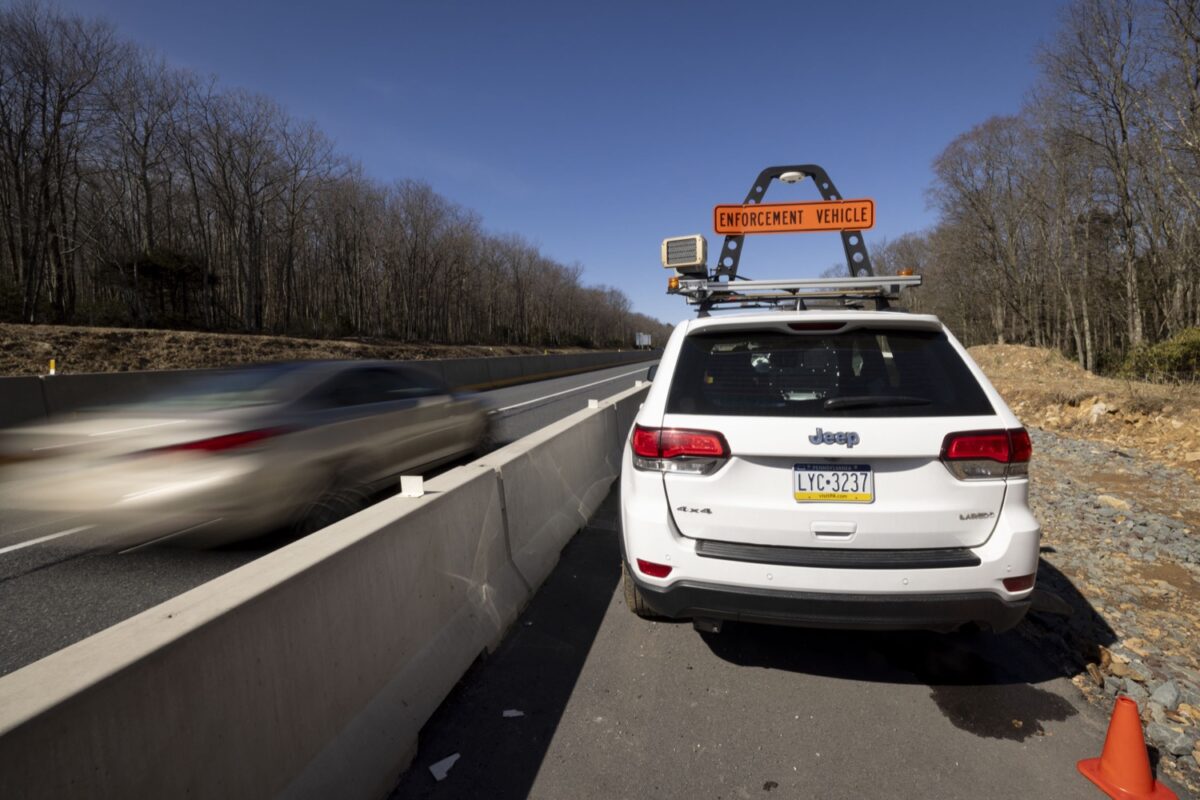The return of spring weather this week brought with it the return of the system to electronically enforce speed limits in work zones on state roads and the Pennsylvania Turnpike.
White Jeep Cherokee vehicles equipped with two types of speed recognition equipment were deployed Tuesday for the first time this year in active road work zones across the state, the Pennsylvania Department of Transportation and turnpike announced. But the program to reduce accidents in construction areas, which the state Legislature made permanent in December after a three-year trial, will have some minor changes to make sure drivers are aware they are entering an automated enforcement area.
Under the program operated by consultant Verra Mobility, as many as 17 vehicles are deployed at road construction sites around the state to record the speed of drivers passing through work zones. The Jeeps will have operators equipped with two devices to record speed, one similar to the equipment state police use and the other Doppler radar.
If the operator records a vehicle driving more than 11 miles above the speed limit a photo automatically is taken of the vehicle’s license plate. If the devices record the same speed, the operator submits the information to state police, who confirm the equipment was calibrated correctly, and if so the vehicle owner is sent a ticket within 30 days.
Drivers will receive a warning for the first violation, followed by a $75 fine for the second and $150 fine for the third. The violations are civil penalties and will not result in points on a driver’s record.
The program deploys 10 vehicles for PennDOT projects and seven for work along the turnpike, but not all of the vehicles are in place yet this year because construction projects have just started after winter.
The Legislature agreed to make the program permanent after statistics showed dramatic improvements in driver conduct in enforcement areas. Statistics show work zone crashes declined by as much as 50% and driving above the speed limit by 11 miles or more dropped by 47%.
Additionally, records show that only 17% of drivers cited for speeding in a work zone committed the violation again.
Lawmakers did make changes to the notifications drivers receive before they enter the zone.
For example, in addition to enforcement sites being published on PennDOT and turnpike websites, there must be two warning signs that drivers are approaching enforcement sites, the closest one at least 1,000 feet ahead of the site. Those signs now will be more colorful to make sure drivers see them, and between the signs the speed limit must be posted so drivers know how fast they can drive.
Turnpike spokeswoman Rosanne Placey said the agency is satisfied with the changes.
“The idea here is that you can see what is coming up and slow down,” she said. “That’s ultimately the goal here.”
Additionally, drivers who receive a warning won’t get another violation until at least 15 days after the postmark on their first violation to make sure they are familiar with work-zone restrictions.
Also, the name of the program officially changed from Automated Work Zone Speed Enforcement to Work Zone Speed Safety Camera program.
With the permanent program, drivers cited during the trial period will have their records cleared and their first new violation will be a warning. But the agencies still will be able to collect fines from the trial period.
“Many injuries and fatalities in work zones can be prevented if drivers simply slow down, and that’s the goal of this program,” Major Robert Krol, director of the state police Bureau of Patrol, said in a news release. “The cameras have been effective in making our work zones safer, and we look forward to seeing additional results from the program’s full-time implementation.”
Ed covers transportation at the Pittsburgh Post-Gazette, but he's currently on strike. Email him at eblazina@unionprogress.com.



